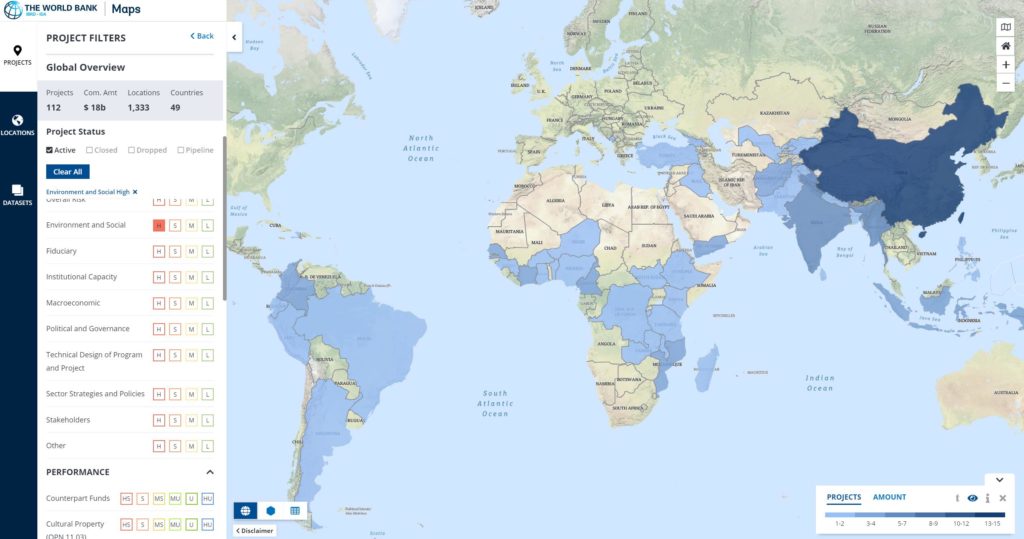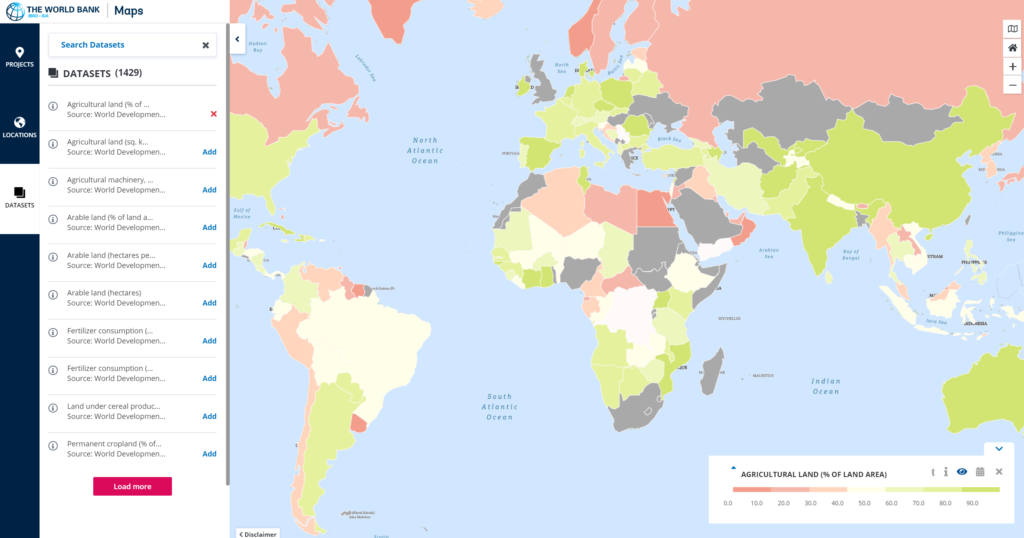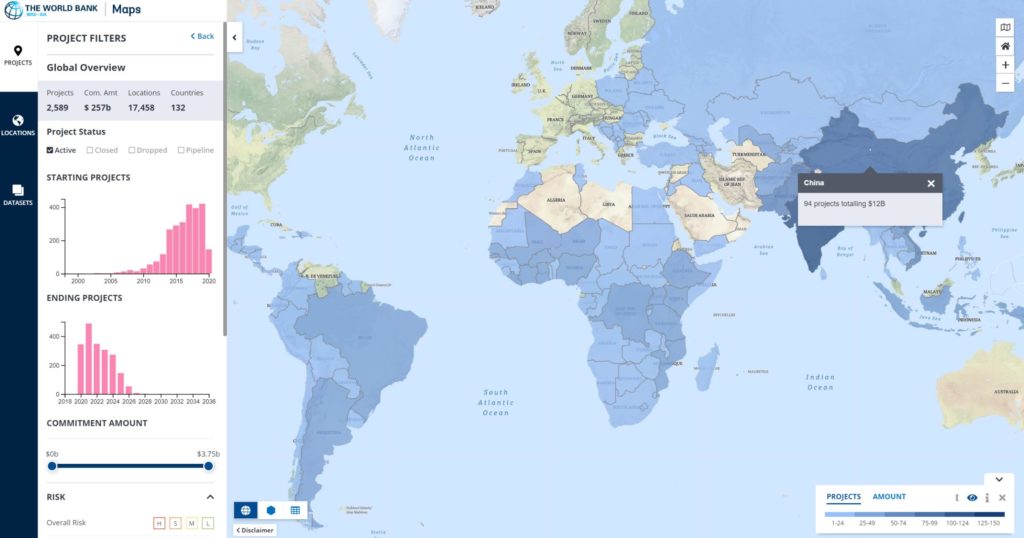The interactive map shows the geographical information of the world bank projects and datasets. Users can get insights from different dimensions, including regions, countries or custom places. There are many data attributes behind the map. Basic key elements such as the number of projects, the project value amount, locations of projects, and countries. In the default mode, the color gradient means the investment amount, the darker the color is, the more the investment. Users can also select projects with specific cares or features, for example, they can track the projects’ progress through risk level, performance and start/end date.

The audience is very broad for this map. They can be people who care about the developing world economics, NGOs who want to study the regional program status or university students, researchers who want to get world bank investment data for research proposes, government policymaker/officers who engaged in relevant projects.
I think one of the key objectives for the map is to show the organization transparency for world bank. According to the World Bank’s Policy on Access to Information, the world bank have the responsibility to show the public where and how the world bank carries out its projects and how the fund is invested. The key propose of this map might be to expend the public’s horizon from a global point of view, empower people with rich data sources to reduce poverty.

The interactive map is a very effective way to achieve its primary goals—— transparency to the public and empowers the public with a rich global data sources. As mentioned above, users can get access to each level and dimension of project related data easily by filters. The project status are also categorized by under preparation, under implementation, analytic and advisory activities, and board proceedings, etc. The map also integrated more data sources in the world level, from agriculture to the informal employment status, which can provide strong support for the public and researchers to know worldwide situations.
